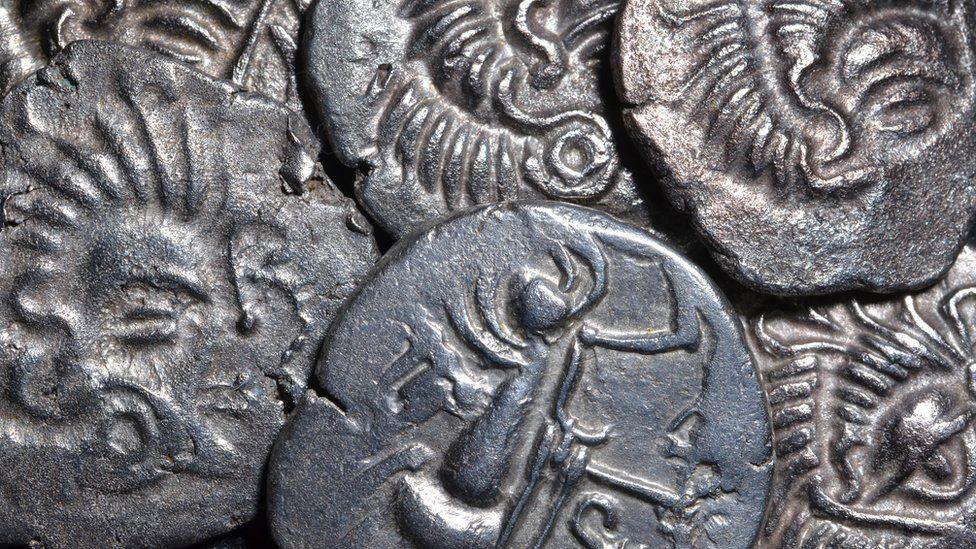Coin hoard finders 'pleased' with draft treasure law
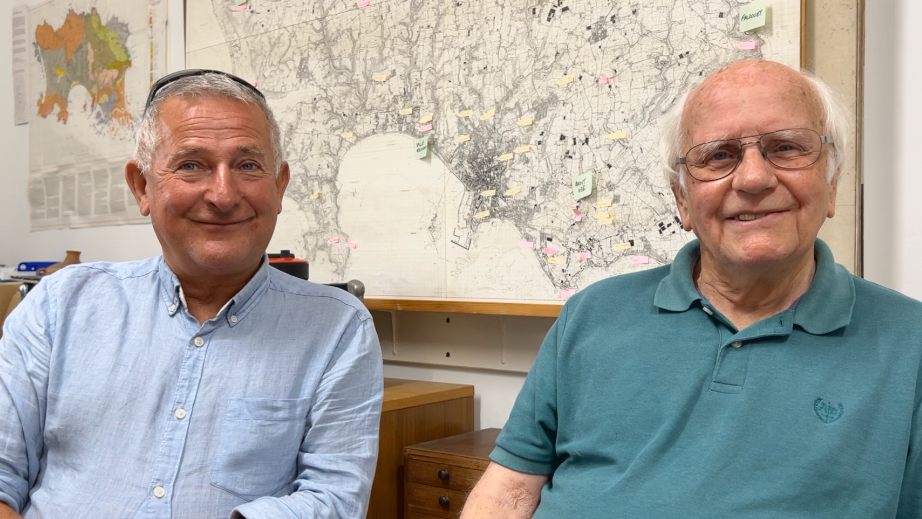
Richard Miles, left, and Reg Mead found the world's largest Celtic coin hoard in 2012
- Published
A pair of metal detecting enthusiasts who unearthed almost 70,000 Iron Age coins said they were "very pleased" with proposals for a new law to make reporting and valuing treasure easier.
Richard Miles and Reg Mead made the discovery, which included gold and silver ingots and jewellery, in a field in Grouville, Jersey, in 2012.
However, they said there was confusion at the time over how to report their find - now dubbed Le Câtillon II - because there was no statute in place.
The proposed Heritage Law, brought forward by Government of Jersey, will provide more clarity, the hoard finders said.
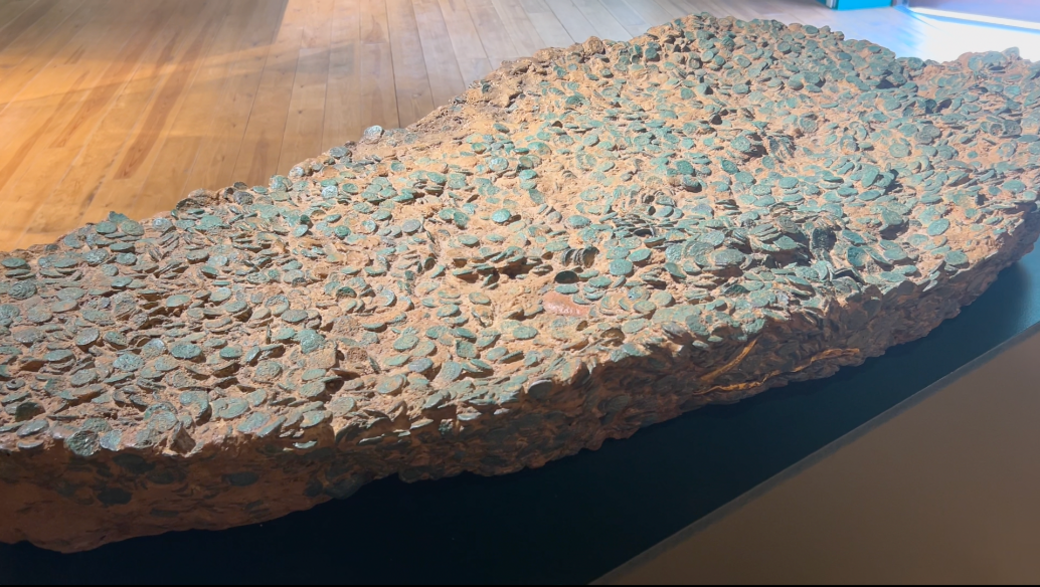
The hoard was taken out the ground in one piece and weighed about a ton
Coin hoards, metallic objects more than 300 years old and made of at least 10% gold or silver, and groups of prehistoric metal objects, are among the archaeological finds classed as treasure by the UK's 1996 Treasure Act.
Jersey has no similar rules in place, which was highlighted by their find, said Mr Miles.
"We needed something of a statute law that would lead us... because it was very complicated," he said.
"We didn't know whether it was going to be treasure trove, whether it was going to be the customary law of Normandy that would apply, whether the State would come in and say they own it.
"We really didn't know what would happen to [the hoard] so it was all very complex."
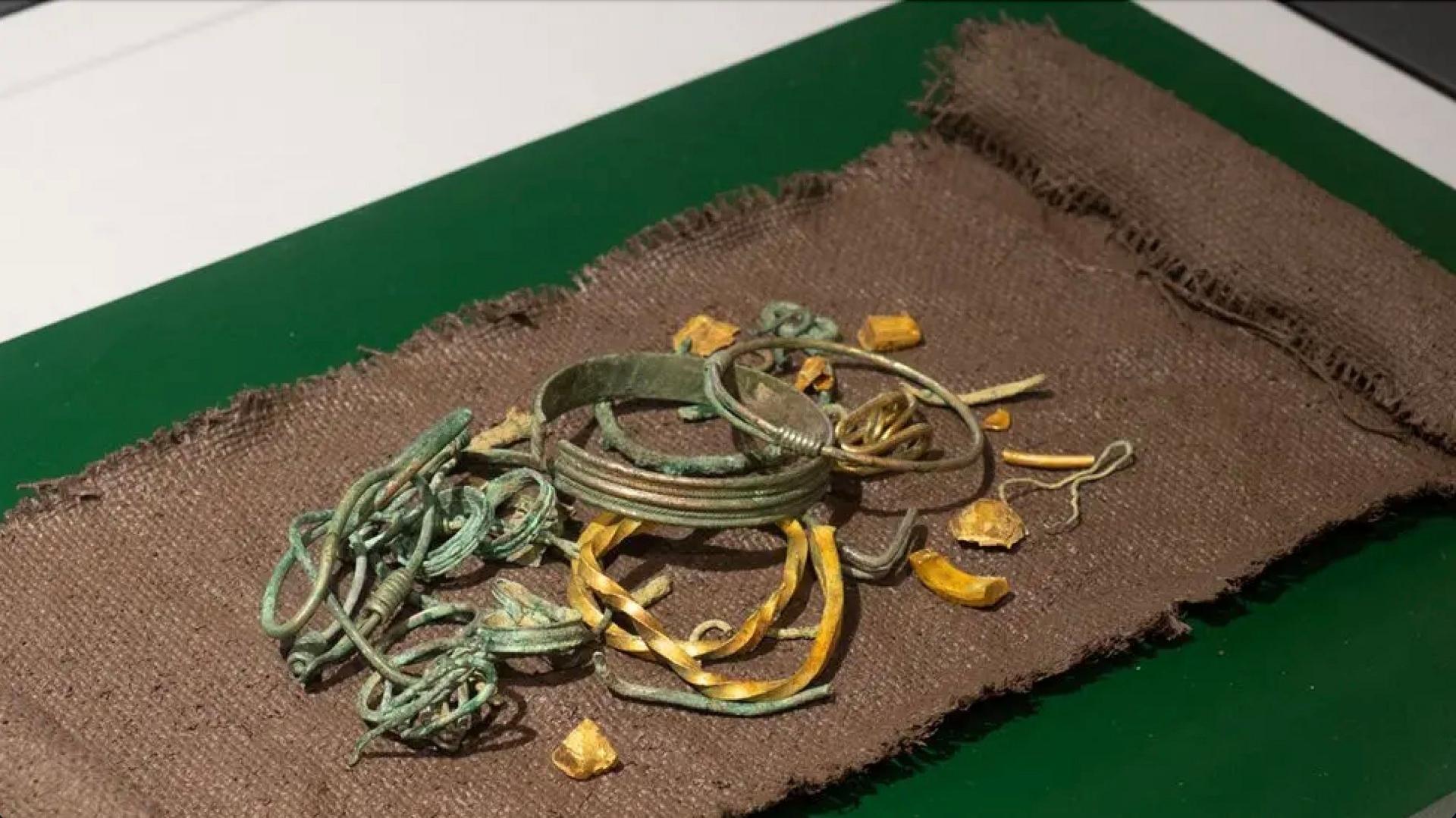
The find also included Europe's largest collection of torc neck rings
Mr Miles and Mr Mead followed what they considered to be "best practice" at the time and reported the find to the Receiver General, a representative for the Crown.
They were unsure whether the 14th Century Norman law would apply, which said treasure troves belonged to the Duke of Normandy, who was the English monarch.
Mr Mead said: "It was very difficult because there wasn't a test case. Because there was no current laws in Jersey, they agreed we would go back to the Treasure Act."
The act means finders must offer to sell their treasure to a UK museum for a price set by the Treasure Valuation Committee (TVC).
However, the TVC set the value at £2m, while experts representing Mr Miles and Mr Mead provided an 800-page report that claimed it was worth more than £6m.
The entire hoard was purchased by the Jersey government for £4.25m in 2021.
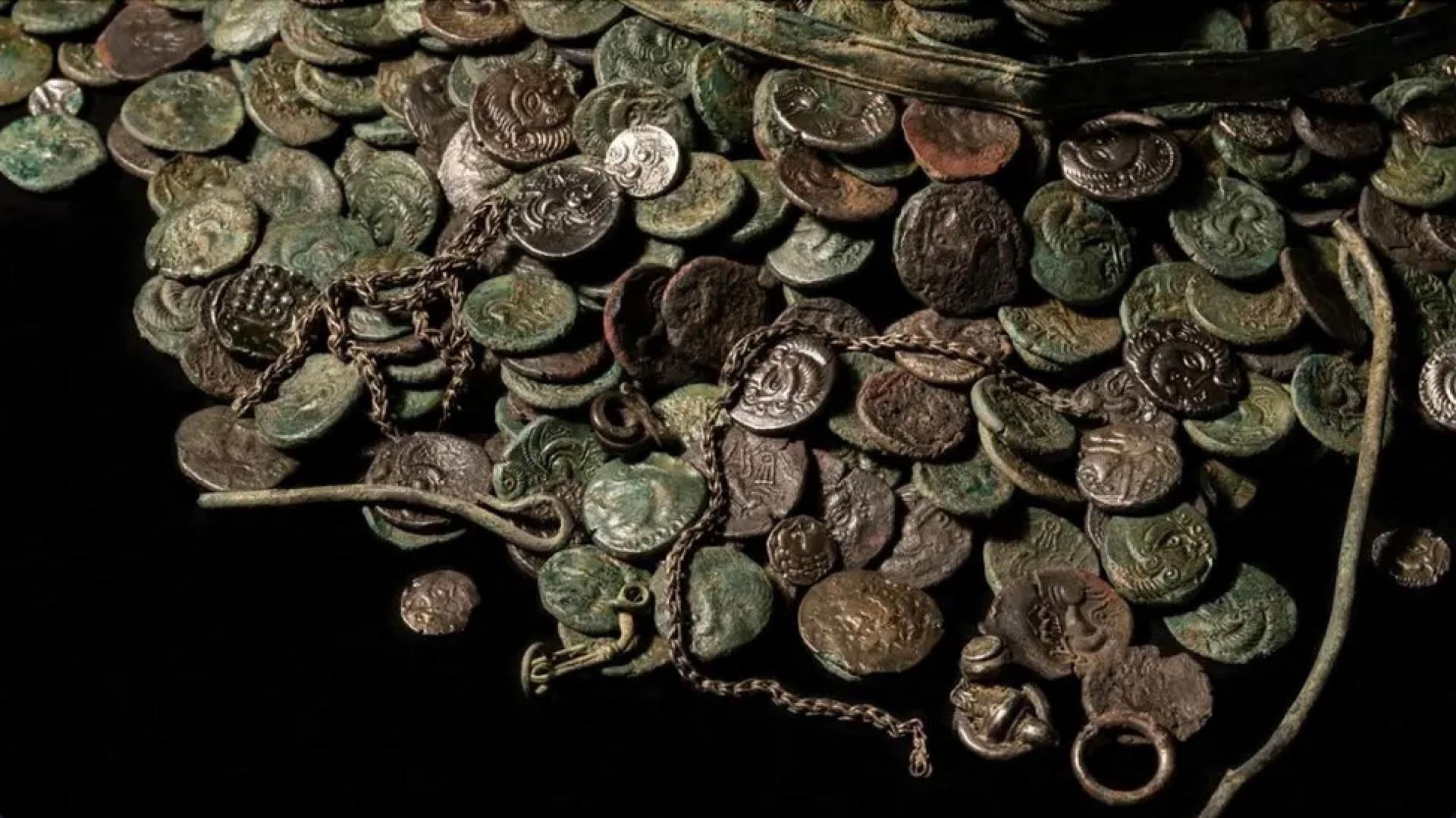
The Iron Age coins were buried more than 2,000 years ago
Under the new Heritage Law, any find more than 50% gold and silver, that has been hidden with the intention of returning, and has no known heirs, is declared treasure.
It must be reported to Jersey Heritage within 14 days and the eventual price will be based on expert advice and linked to the object's market value.
Mr Miles said: "My view is that the law is actually really good. It follows very closely what the best practice in the UK is.
"It looks after the finders, the landowners, it takes into consideration the Crown and heritage bodies, so really it's a win-win-win situation for everybody and is very fair."
Mr Mead added: "It's been put together better than I could've imagined. I'm very pleased."
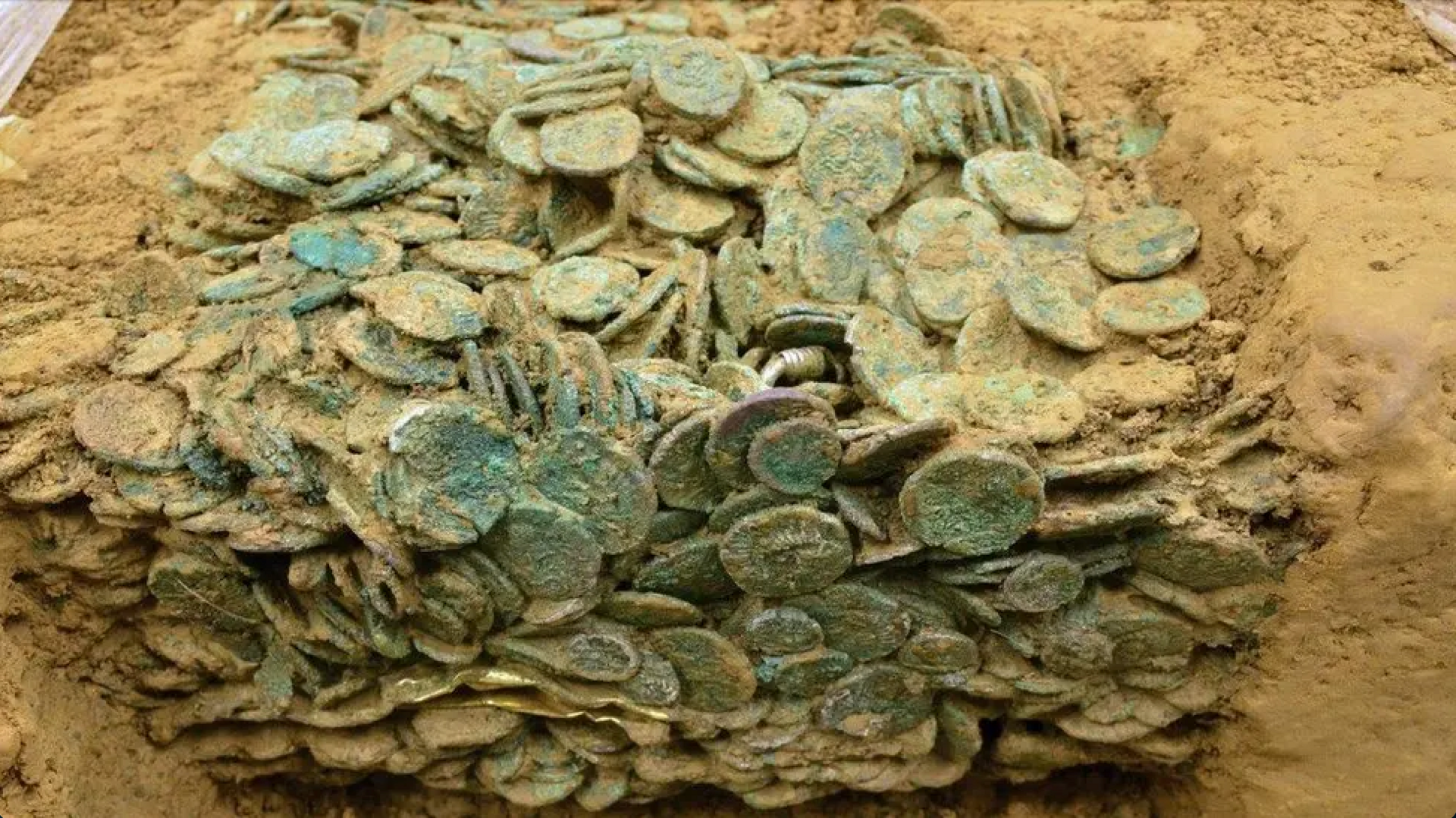
There was a long running treasure hunt for the hoard across Grouville fields
Follow BBC Jersey on X, external and Facebook, external. Send your story ideas to channel.islands@bbc.co.uk, external.
Related topics
- Published6 August
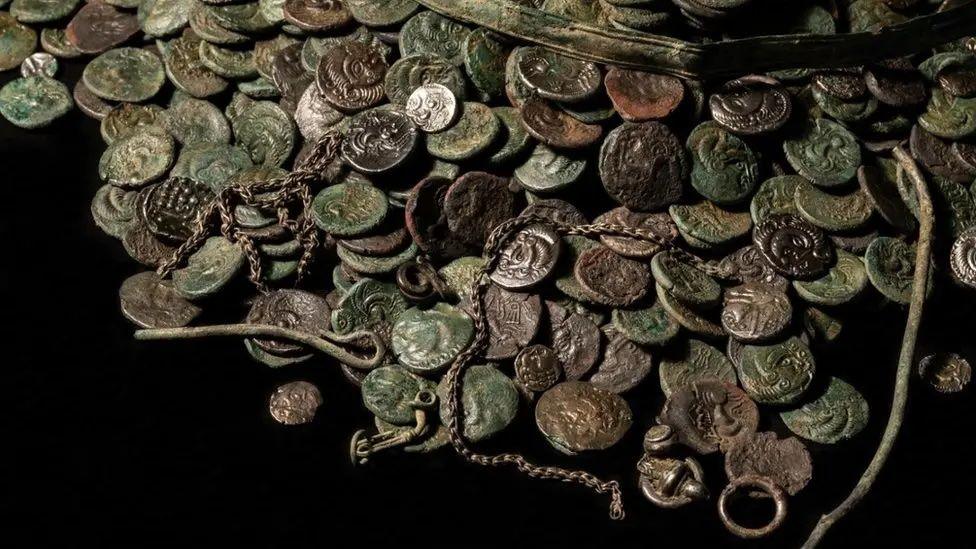
- Published5 October 2023
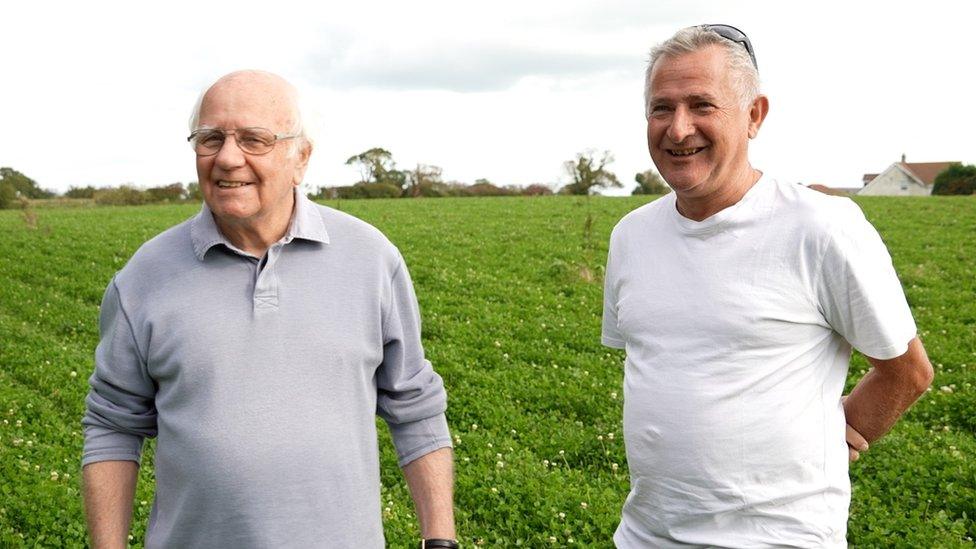
- Published18 September 2023
